Misinformation is one of the biggest challenges in today’s digital world. With social media feeds overflowing with viral rumors and manipulated content, efforts to combat misinformation have become more important than ever. Researchers, educators, and journalists are all working to develop tools that help the public better understand how misinformation spreads and how to identify it. In this post, I’ll review two such tools: the interactive game Bad News and the fact-checking platform Rumor Guard, both designed to educate users about the spread of misinformation.

Bad News is an interactive game that turns you into the villain of the story—tasking you with mastering the art of disinformation. As you progress, you employ six manipulative tactics: impersonation, emotional manipulation, polarization, conspiracy, discrediting, and trolling. Your mission? Gain as many followers as possible and establish credibility in the world of fake news. It’s a darkly humorous take on a serious issue, but it’s an eye-opening experience.
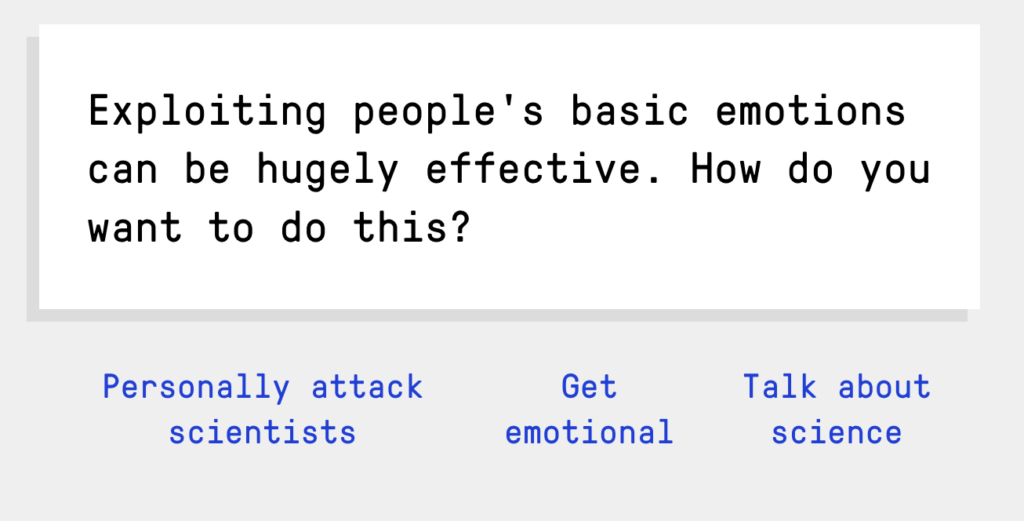
The game does a great job of showing how misinformation works in a hands-on way. For example, in the impersonation phase, you quickly see how easy it is to pretend to be a trusted news source and fool people into believing your content. In the emotional manipulation phase, you learn how tapping into emotions like fear, anger, or empathy makes people more likely to believe false information. As you move through the game, you watch your followers grow with each trick, showing how fast misinformation can spread when it plays on people’s emotions and beliefs.
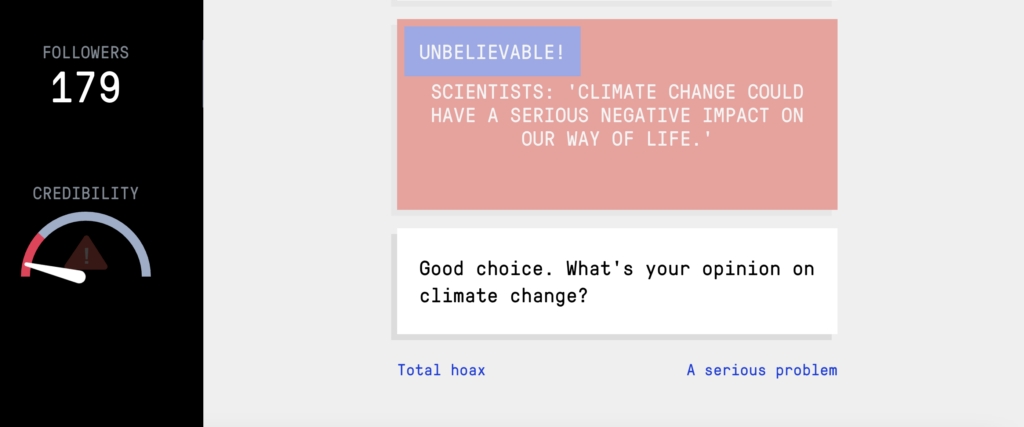
In contrast to the lighthearted nature of Bad News, Rumor Guard takes a much more serious, methodical approach. This tool helps users evaluate online claims using a five-factor framework: authenticity, source, evidence, context, and reasoning. It’s designed to guide users through the process of fact-checking viral rumors and questionable posts, offering a clear and structured method for debunking false information.
For example, a recent check debunked a viral rumor about Taylor Swift endorsing a 2024 presidential candidate by evaluating it against these factors, ultimately finding the claim to be false.
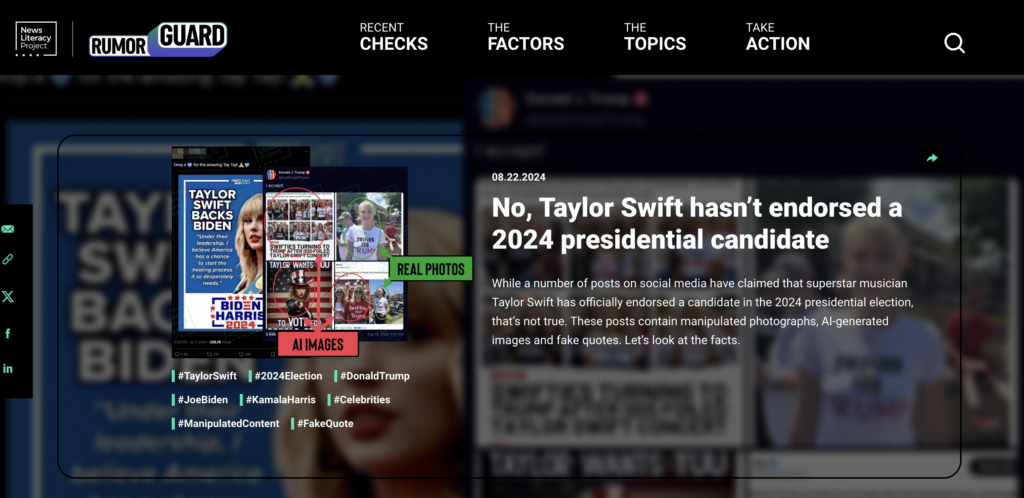
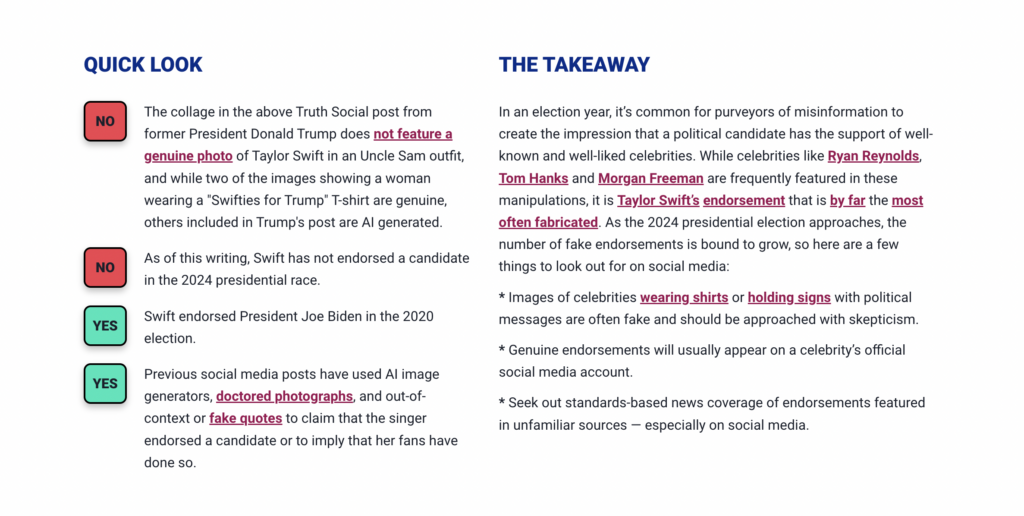
The best thing about Rumor Guard is it’s ease of use and user friendly interface. It gives you five simple steps that can be applied to almost any type of online content. For example, it helps you check if a photo or post has been altered, or whether the source is reliable. It also shows how some content can be taken out of context to mislead people.
While I was exploring Rumor Guard, I came across a link to a helpful quiz from the News Literacy Project called “Is It Legit?” This quiz is designed to teach you how to recognize trustworthy news sources by pointing out red flags, or “trust busters,” that signal when a source is not reliable. By combining tools like Rumor Guard with interactive elements like this quiz, users can build stronger, real world fact-checking habits.
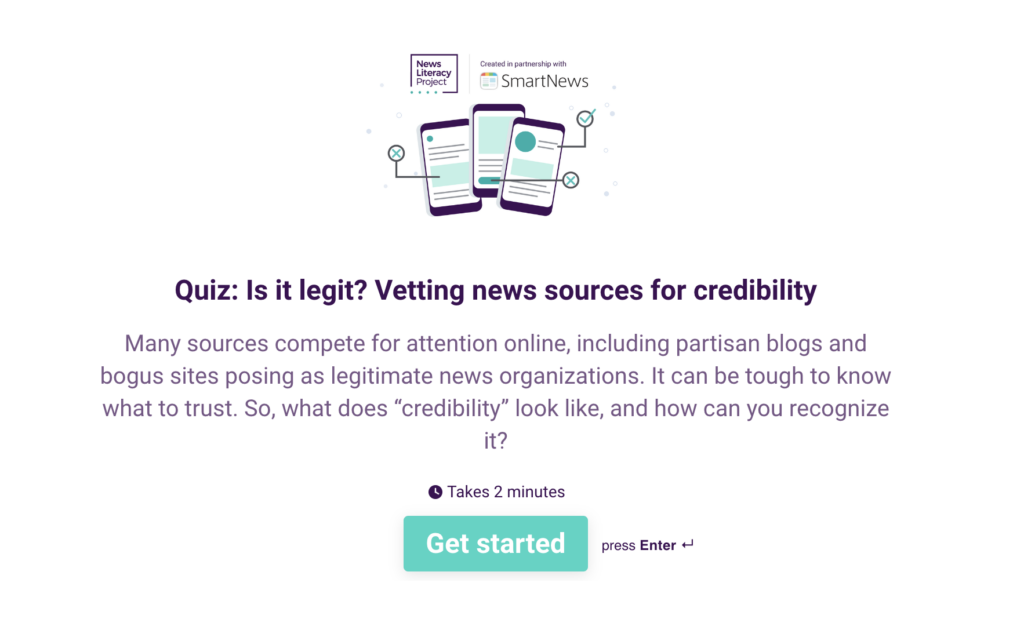
Research shows that games can be a useful way to teach people how to spot and stop misinformation. According to a Poynter article, games like Bad News help people better understand and resist false information by letting them see how it’s spread. These tools make learning about misinformation more engaging and easier to remember, showing that games can be a strong tool in the fight against misinformation. However, while these tools are helpful, they’re just one piece of the solution. We also need bigger efforts like building trust in journalism, promoting transparency, and teaching critical thinking skills to make a real difference.

No Responses